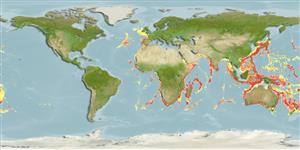Preferred temperature (Ref.
123201): 4.7 - 12.2, mean 7.9 °C (based on 759 cells).
Phylogenetic diversity index (Ref.
82804): PD
50 = 0.5000 [Uniqueness, from 0.5 = low to 2.0 = high].
Bayesian length-weight: a=0.00759 (0.00332 - 0.01733), b=3.02 (2.83 - 3.21), in cm total length, based on LWR estimates for this Genus-body shape (Ref.
93245).
Trophic level (Ref.
69278): 3.2 ±0.3 se; based on size and trophs of closest relatives
Resilience (Ref.
120179): Medium, minimum population doubling time 1.4 - 4.4 years (tmax=3.7; tm=1.4; K=0.8).
Fishing Vulnerability (Ref.
59153): Low vulnerability (17 of 100).
Nutrients (Ref.
124155): Calcium = 142 [54, 392] mg/100g; Iron = 1.32 [0.59, 3.33] mg/100g; Protein = 16.4 [14.4, 18.5] %; Omega3 = 0.955 [0.488, 1.812] g/100g; Selenium = 60.5 [22.5, 174.5] μg/100g; VitaminA = 32.2 [7.2, 182.9] μg/100g; Zinc = 0.986 [0.588, 1.591] mg/100g (wet weight); based on
nutrient studies. 